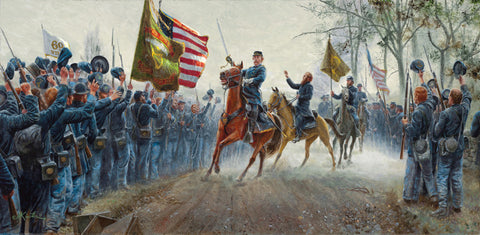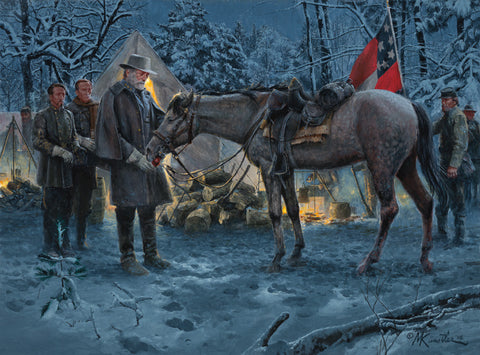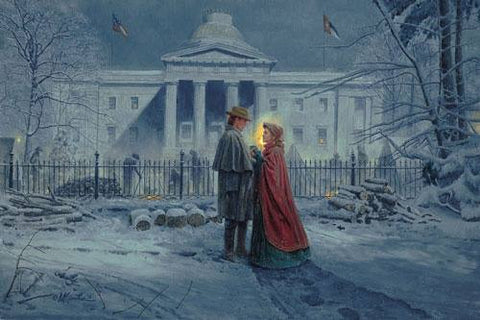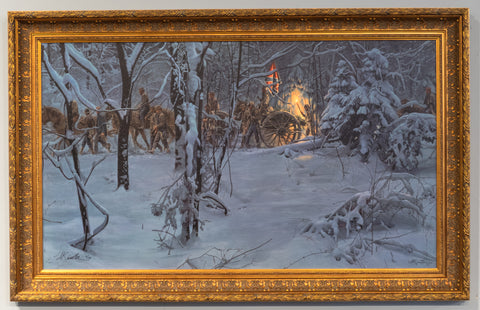The "Mud March"
by Mort Kunstler
Fredericksburg, Virginia, January 21, 1863
By sheer determination, they slogged forward toward the enemy. They were the soldiers of the Union’s Army of the Potomac, and they did not give up. Just weeks earlier, they had been dispatched in wave after wave in an assault on General Robert E. Lee’s fortified line at the battle of Fredericksburg. Their attack had failed, but only due to the misguided leadership by the army’s latest commander, General Ambrose E. Burnside, and not because of any lack of courage by the men in blue.
Now, on January 21, 1863, they were advancing again—as Burnside attempted to flank Lee’s army. The march was conducted in the midst of a brutally fierce winter storm. The weather caused the road to be churned into an ocean of mud. It was “an indescribable chaos of pontoons, vehicles, and artillery,” a Federal officer would later recall—“Wagons upset by the roadside, guns stalled in the mud—horses and mules buried in the liquid mud.” Even so, the battle-hardened soldiers of the Army of the Potomac did not give up.
Caissons became mired in the mud. Horses and mules slipped and fell. Driving rain flailed man and beast alike—and yet these men in blue did not yield. Onward they pushed, led by Lieutenant Colonel Joshua Chamberlain of the 20th Maine. They were determined to have another contest with the enemy who had prevailed so many times before. But it would not be here and now. Battle would not come at this time. However, the “Mud March” would become a symbol for this army—a demonstration of endurance, determination and fortitude, as well as inept leadership. On a future field of fire and glory called Gettysburg, the same troops would emerge decisively victorious—due to the same type of courage and grit they displayed in the “Mud March” at Fredericksburg.
| Style | Image Size |
| Archival Paper | 13 1/2" x 30" |
| Classic Edition | 18" x 40" |






Share this item: